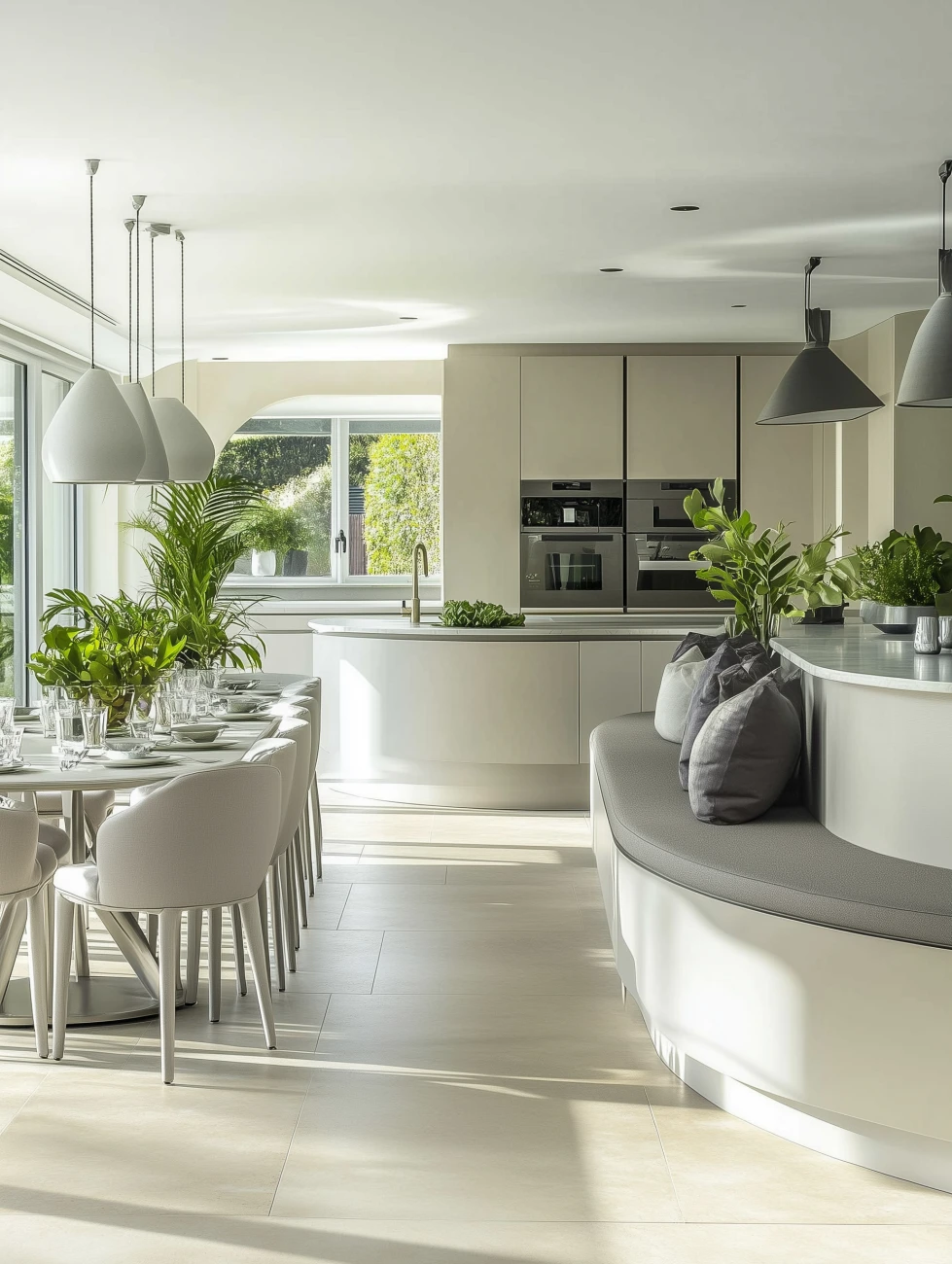
Curved kitchen designs?
Who would have thought that the kitchen, once dominated by rigid straight lines and sharp corners, would embrace the gentle flow of nature? The design world is witnessing a remarkable shift as curved elements sweep through modern kitchens, transforming these functional spaces into more inviting, organic environments.
This evolution isn’t just about aesthetics – it’s a response to our deepening understanding of how space affects wellbeing.
From rounded islands that encourage natural movement to arched cabinets that soften the visual landscape, curved design elements are redefining what a kitchen can be, both in form and function.
The Rise of Curved Kitchen Designs
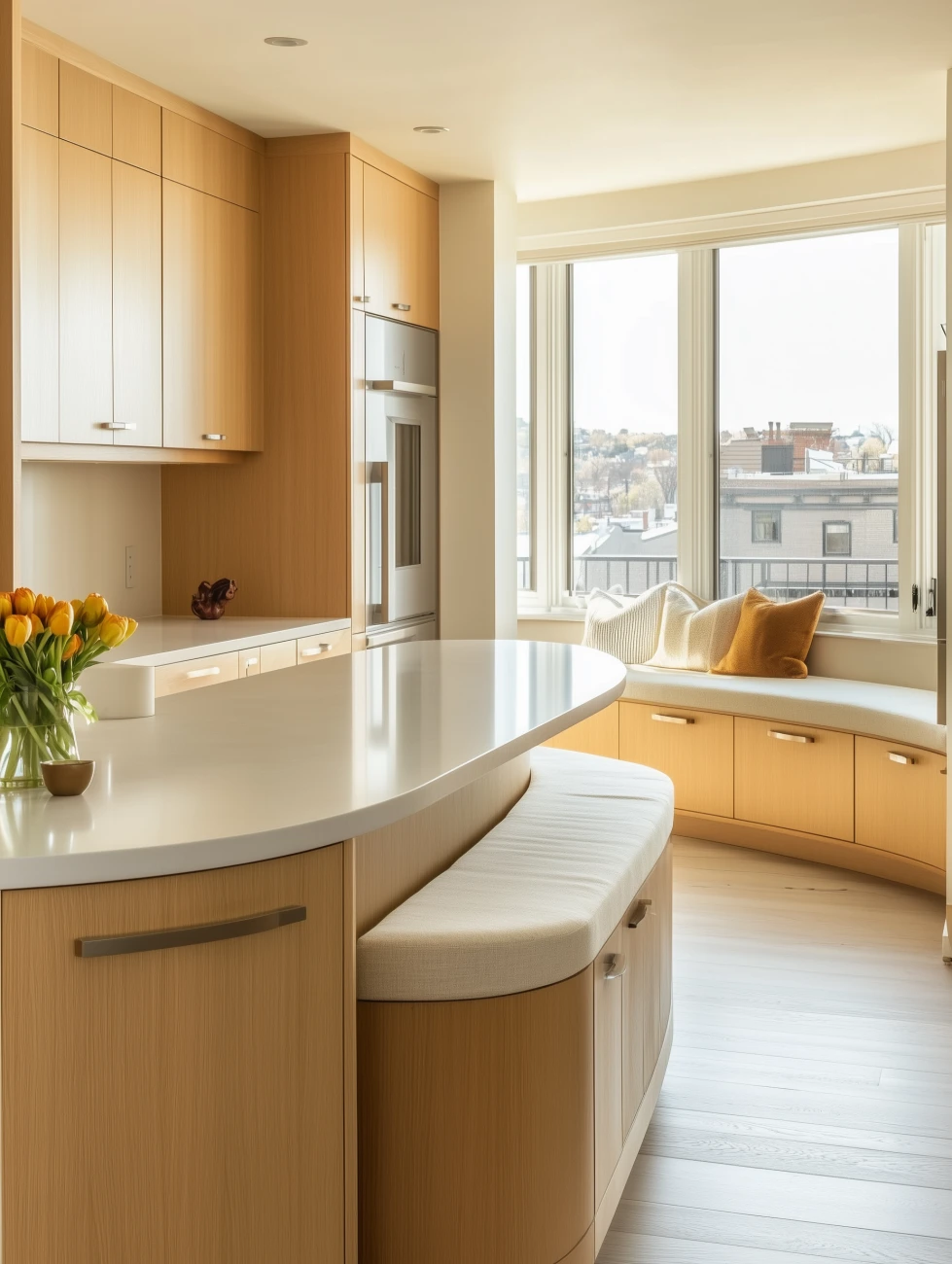
Kitchens are moving away from sharp angles towards gentler shapes, with curved designs taking center stage. These rounded elements create a softer look amid traditional boxy cabinetry, adding visual interest and warmth. Arched cabinets stand out as eye-catching features while working in harmony with the home’s architectural style.
Types of Curved Elements for Kitchens
Arched cabinet doors add character while keeping dishes organised. Kitchen islands with rounded corners make movement smoother and safer, especially in busy family spaces. Fluted kitchen features create subtle texture through light-catching ridges. Curved countertop edges soften the overall look, making kitchens feel less rigid and more welcoming.
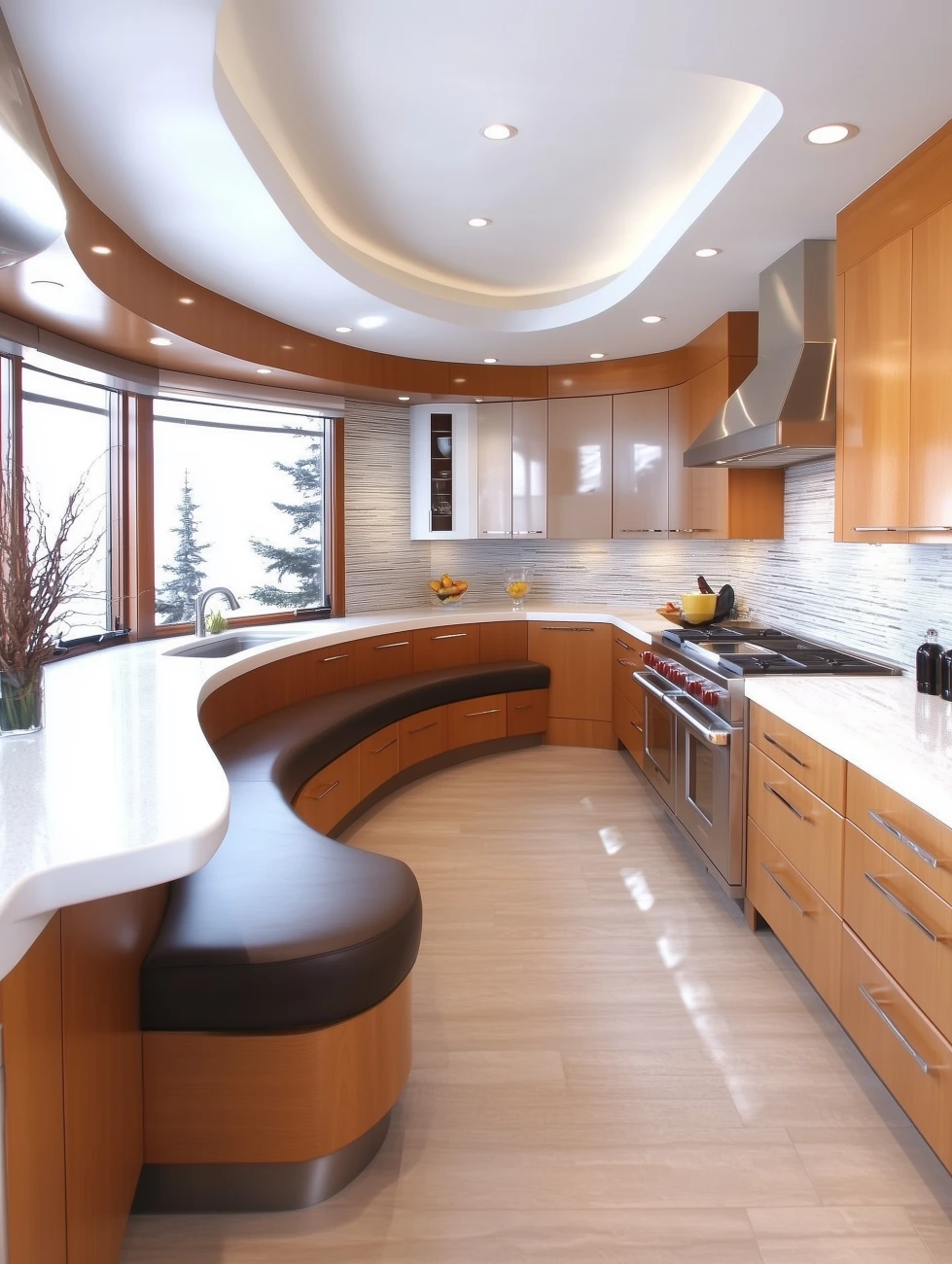
Materials Suitable for Curved Kitchen Designs
Natural wood stands out as a top choice for curved kitchen features, offering both flexibility and warmth. Oak and walnut bend well for rounded cabinet doors while keeping their strength. For countertops, recycled glass and stone materials work nicely with curved edges, providing both style and practicality. Sustainable bamboo materials offer an eco-conscious option that shapes smoothly into arched designs.
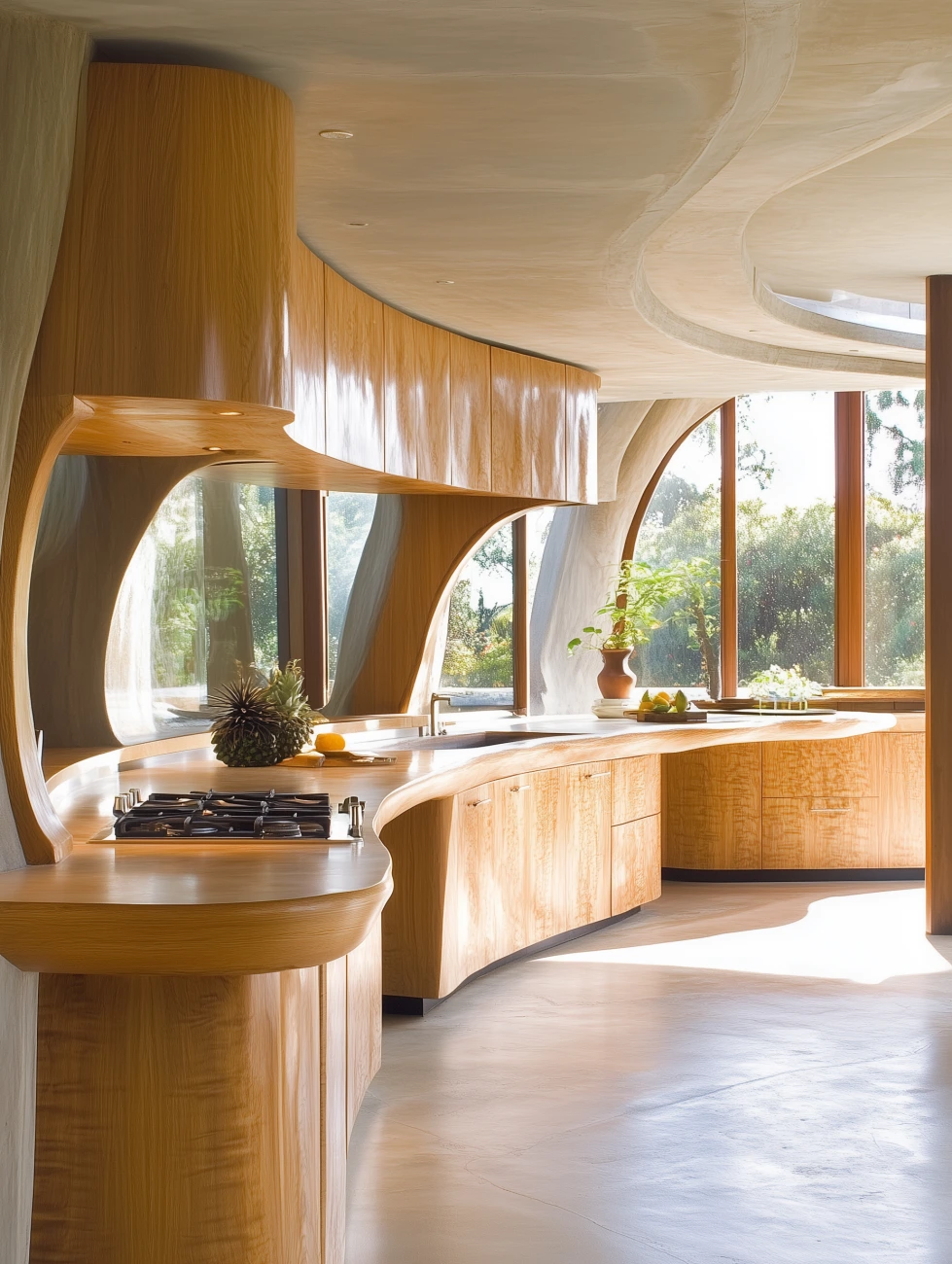
Colour Schemes That Complement Curved Kitchen Designs
Warm earth tones like ochre and terracotta pair beautifully with rounded kitchen features, making spaces feel cozy. Rich jewel tones including emerald and aubergine, add depth to arched cabinets and curved islands. For a striking look, pair dark wood curved elements with bold colours like deep blue or forest green, balancing modern shapes with classic warmth.
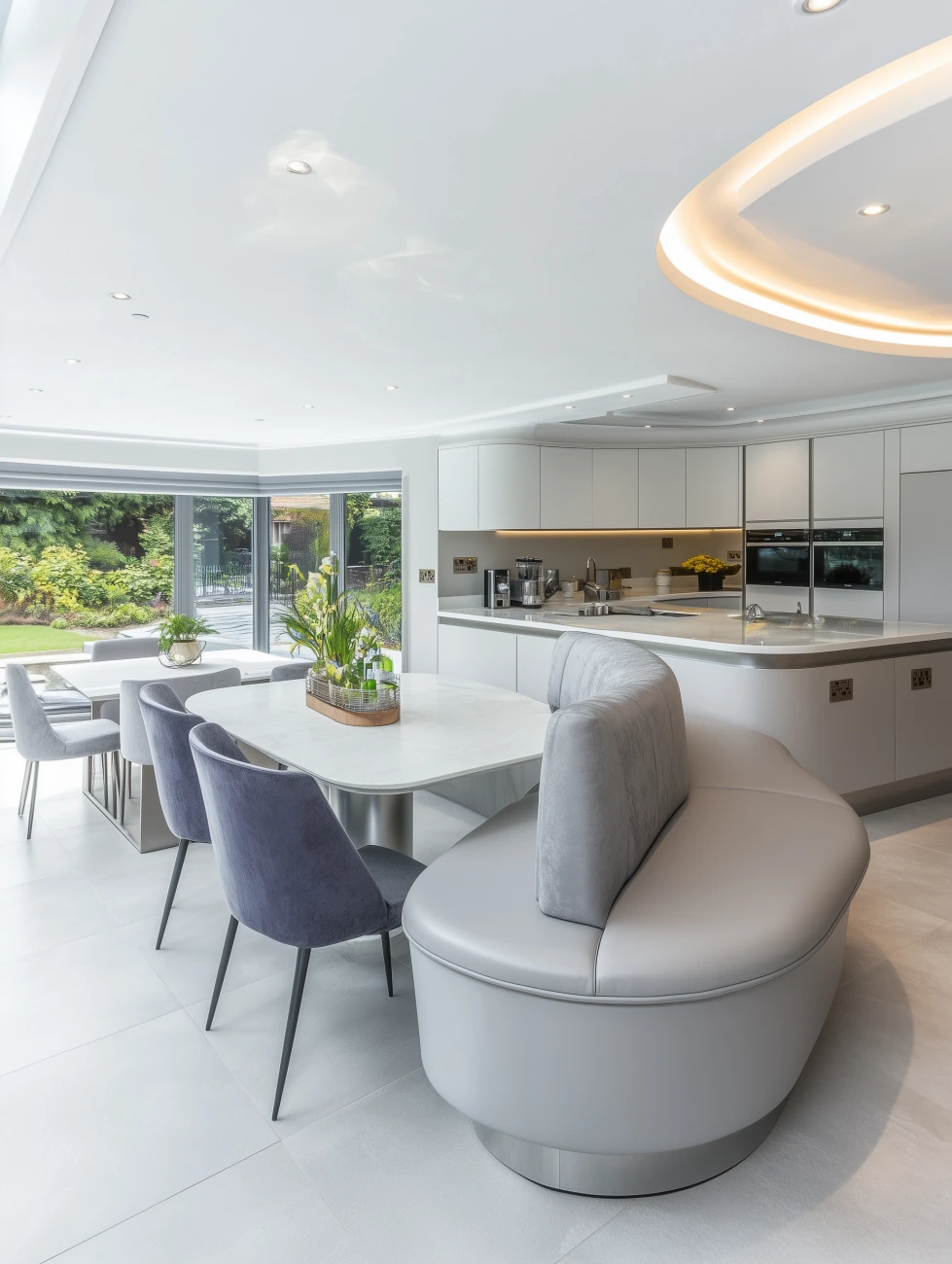
Benefits of Incorporating Curves in Kitchen Spaces
Curved kitchen features make spaces feel more open and easier to move through. Kitchen trends have become more focused on smooth traffic flow and safety. Rounded corners on islands reduce bumps and accidents, making them safer for families. The flowing lines create natural pathways between cooking zones, which helps multiple people work together comfortably.
Arched doorways and curved storage solutions also make kitchens appear larger by softening sight lines. These gentle shapes add a calming effect to what’s typically a busy room, turning practical spaces into more relaxing areas where people want to gather.
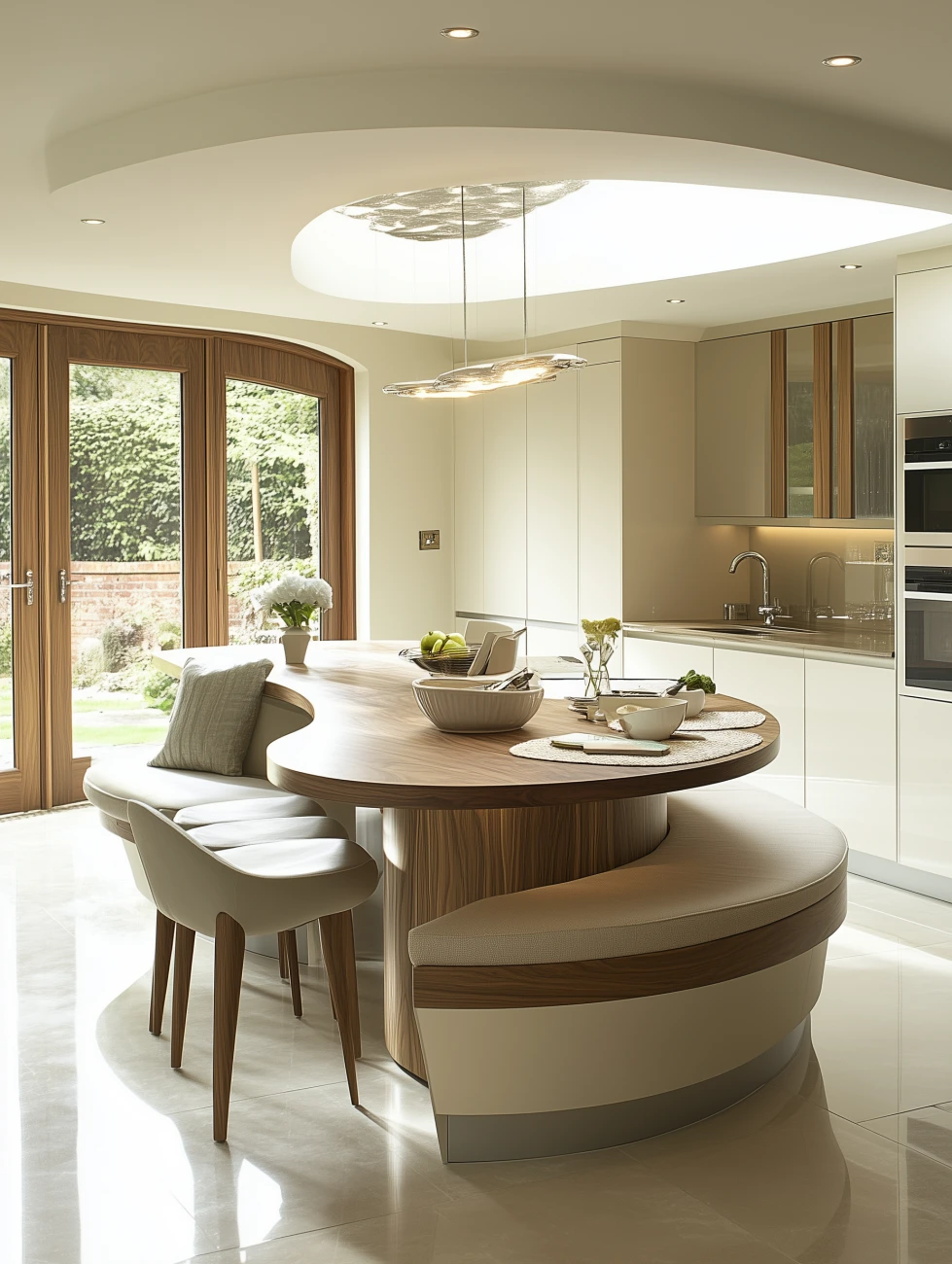
Practical Considerations When Implementing Curved Designs
When adding curved features to your kitchen, check if your walls can support arched cabinets or rounded storage units. Work with a professional to assess load-bearing requirements. Match the radius of curved countertops to your existing cabinet depths for a proper fit. Allow extra space around rounded islands for comfortable movement between work zones.
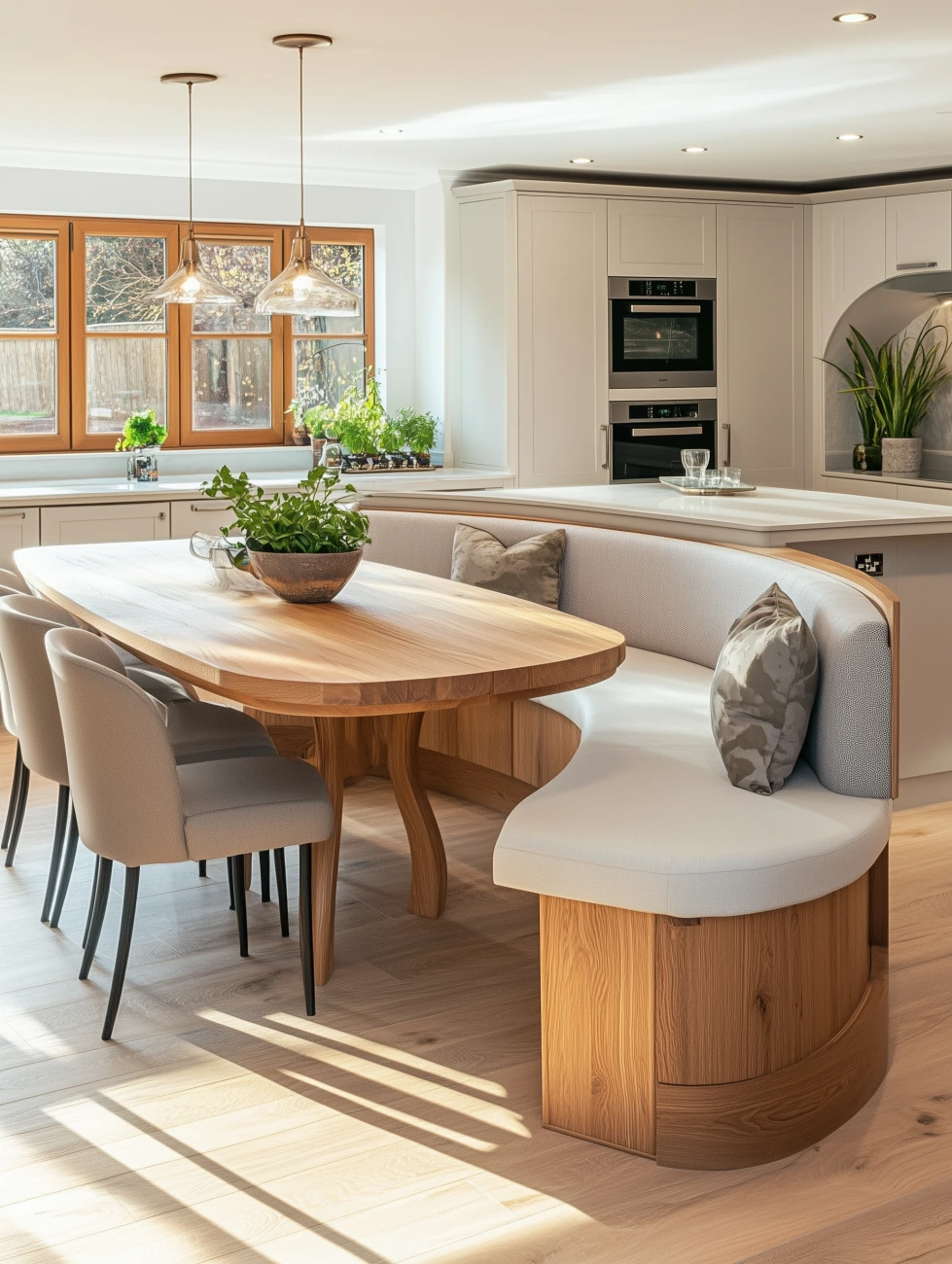
Curved Kitchen Islands: Design Ideas and Functionality
Kitchen islands with flowing curves create natural gathering spots while keeping work areas within reach. Purpose-driven islands create separate zones – one for food prep and another for casual dining or socialising. Rounded corners make movement smoother in busy kitchens, while curved seating areas invite comfortable conversations.
For open layouts, curved islands guide traffic flow naturally between cooking and living spaces. Their organic shapes blend cooking zones with social areas, making kitchen tasks feel less rigid and more social.

Integrating Curved Elements with Existing Kitchen Architecture
When adding curved features to established kitchen spaces, balance is key. Match the radius of new rounded elements to existing architectural lines – for example, pair arched cabinet tops with window shapes already present in your kitchen. A curved island can mirror the sweep of a bay window, creating visual harmony.
Mix straight and curved elements thoughtfully. Straight-lined upper cabinets work well with rounded base units, while curved handles soften boxy appliances. For older kitchens, rounded corner units make tight spaces more functional without clashing with traditional features.
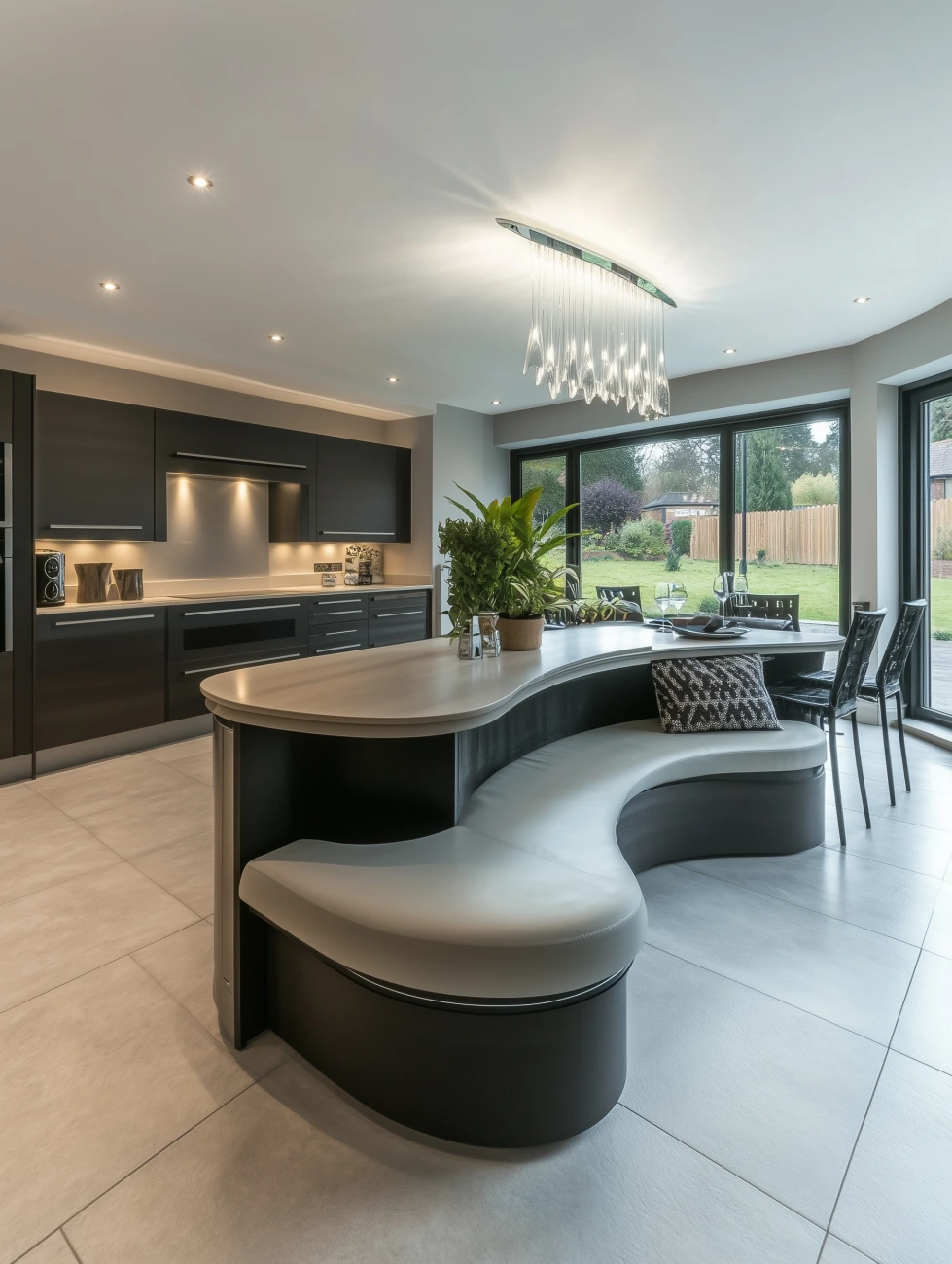
Lighting Options to Enhance Curved Features
Well-placed lights make curved kitchen elements stand out beautifully. Soft touches and lighting add softness to rounded islands and arched doorways, replacing traditional glass globes. Statement chandeliers with sweeping arms echo curved design elements below, while gentle sconces highlight the texture of rounded cabinet fronts.
Layered lighting brings depth to curved features, with under-cabinet strips following rounded edges and pendant lights drawing attention to flowing island shapes. Wall-mounted fixtures with adjustable arms let you direct light to showcase arched details and rounded corners.
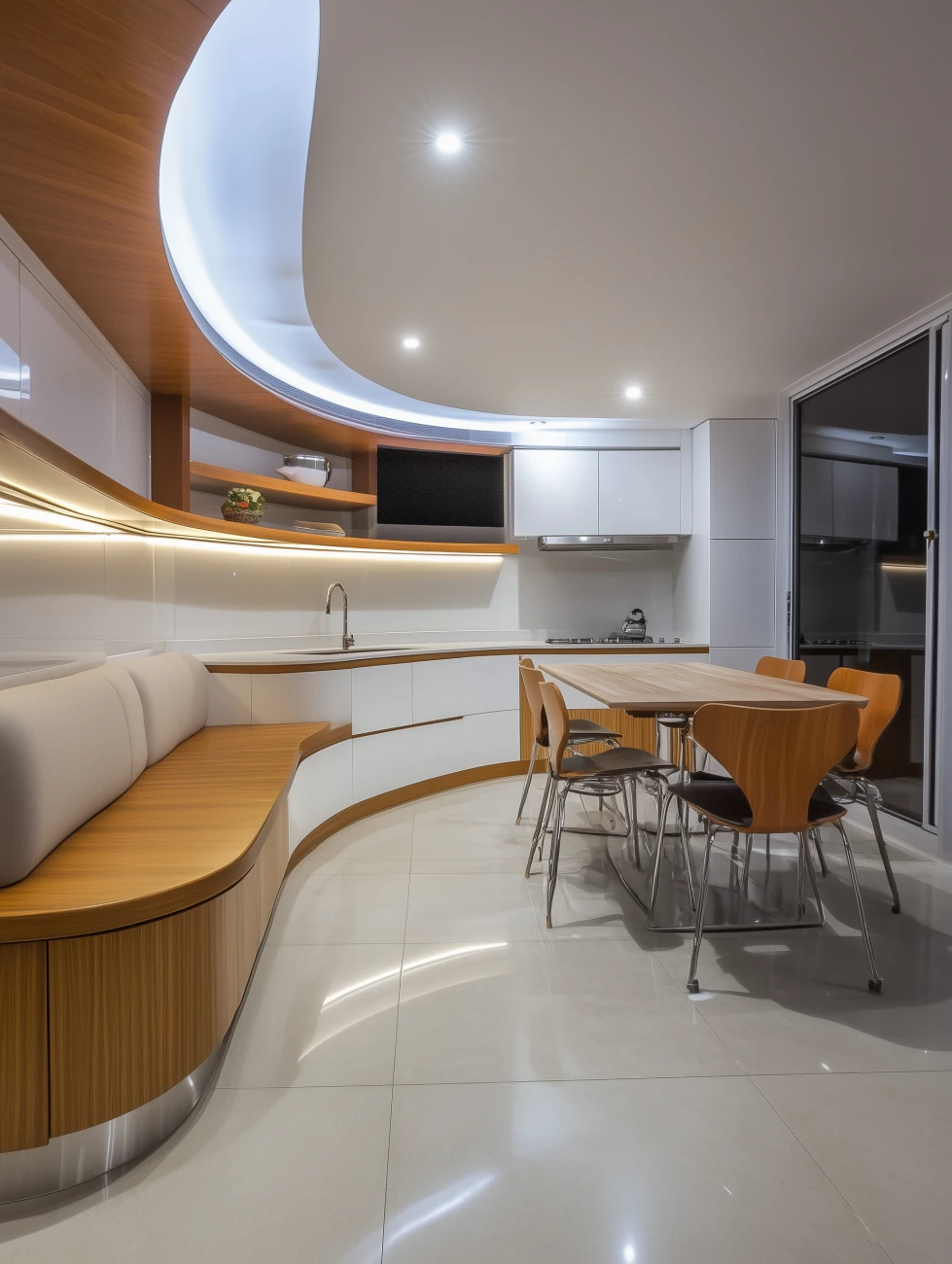
Get the look
7” Solid Wood Vintage Hammered Metal Hanging Light Fixture Adjustable Height Antique Gold Pendant Lamp for Farmhouse, Dining Room, Brushed Brass, 3 Pack Small.
Brand ELYONA
Color Brass - 3 Pack
Material Handmade Hammered Brushed Brass Metal, FSC Certification Solid Wood
Style Vintage, Industrial, Retro, Mid Century Modern, Rustic
Light fixture form Pendant
Balancing Curved and Straight Lines in Kitchen Design
Mix straight cabinet runs with rounded end units to create visual interest without overwhelming the space. For example, pair linear upper cabinets with a show-stopping lighting elements below. Add soft touches through rounded cabinet pulls on squared doors.
Round dining tables next to straight kitchen counters make perfect transition points between cooking and eating areas. This combination keeps the kitchen functional while adding welcoming shapes to gathering spaces.
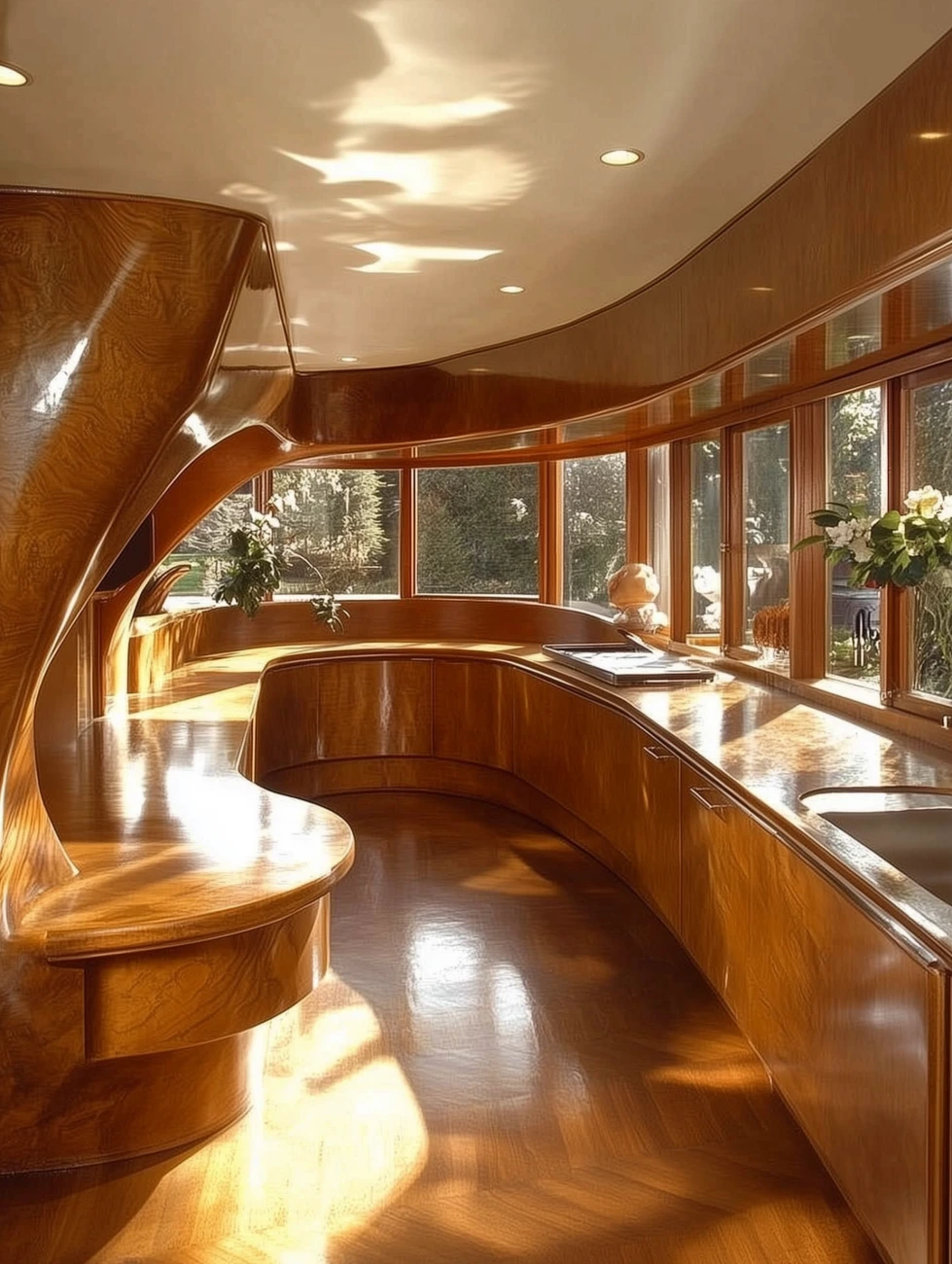
Cost Implications of Curved Kitchen Elements
Custom kitchen storage elements typically cost 20-30% more than straight-line designs due to specialised craftsmanship. Custom-built rounded cabinets need extra material and time to shape properly. Curved stone countertops require larger slabs to accommodate flowing shapes, adding to material expenses.
Combination islands from manufacturers offer a middle-ground option, balancing style with budget. Simple rounded corners and gentle curves keep costs lower than fully curved designs.
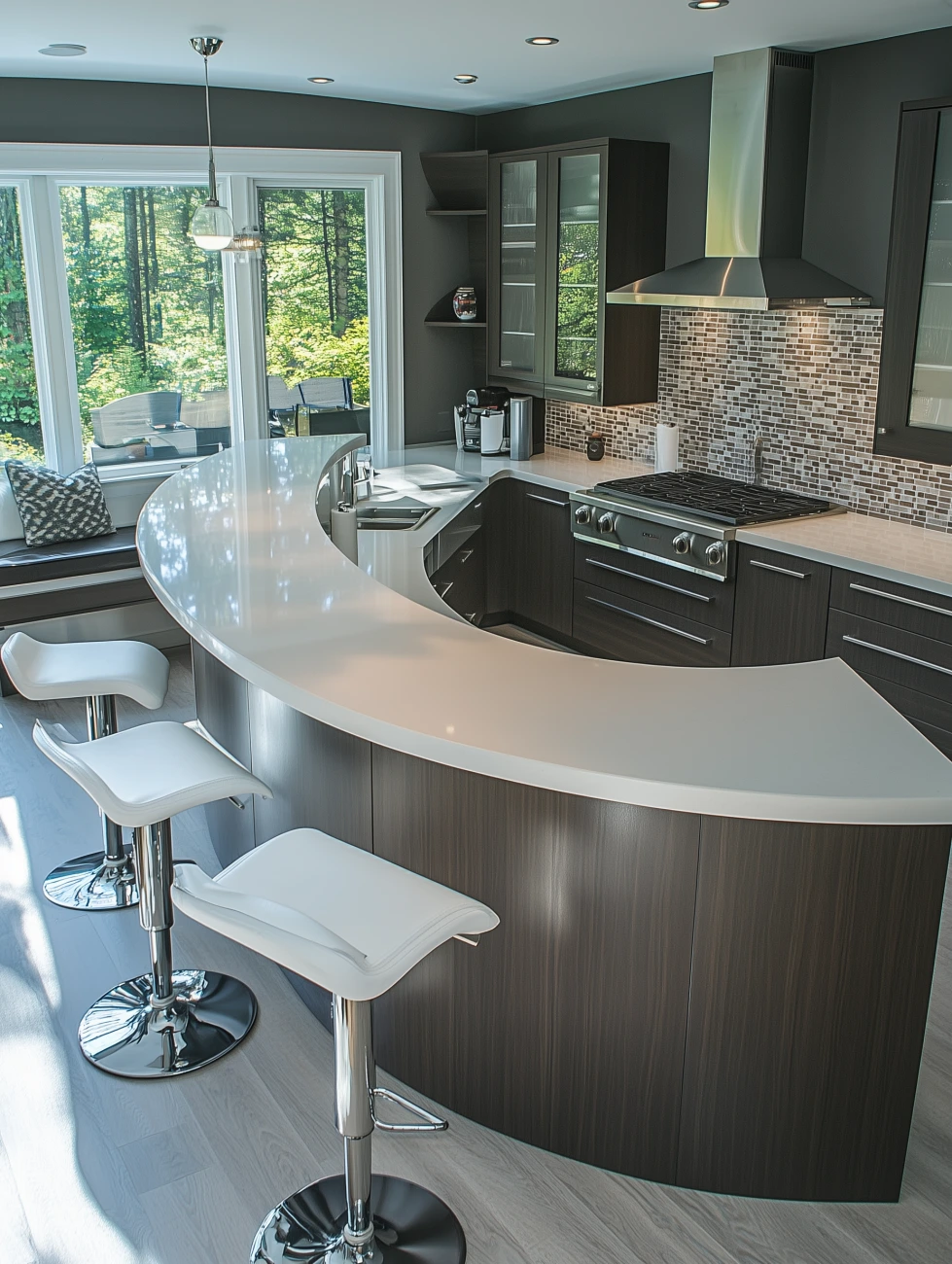
Maintenance and Cleaning of Curved Surfaces
Rounded kitchen surfaces need specific care to keep their smooth lines looking fresh. Wipe curved countertops from the center outward to catch crumbs that collect in rounded edges. Use soft microfiber cloths that bend easily into curved corners and arched cabinet fronts.
Curved islands with textured surfaces benefit from regular dusting with a soft brush to prevent buildup in ridged areas. For daily cleaning, warm water and mild soap work well on curved elements, following the natural flow of rounded edges.
Tips for Working with Designers or Contractors on Curved Kitchen Projects
Start with detailed drawings showing your wanted curved elements. Share photos of curved designs you like, noting specific features. Ask about material options that work well for rounded shapes – some woods and stones bend better than others.
Get clear quotes listing labour costs for integrated built-in appliances versus standard straight units. Make sure contractors have past examples of curved work in their portfolio.
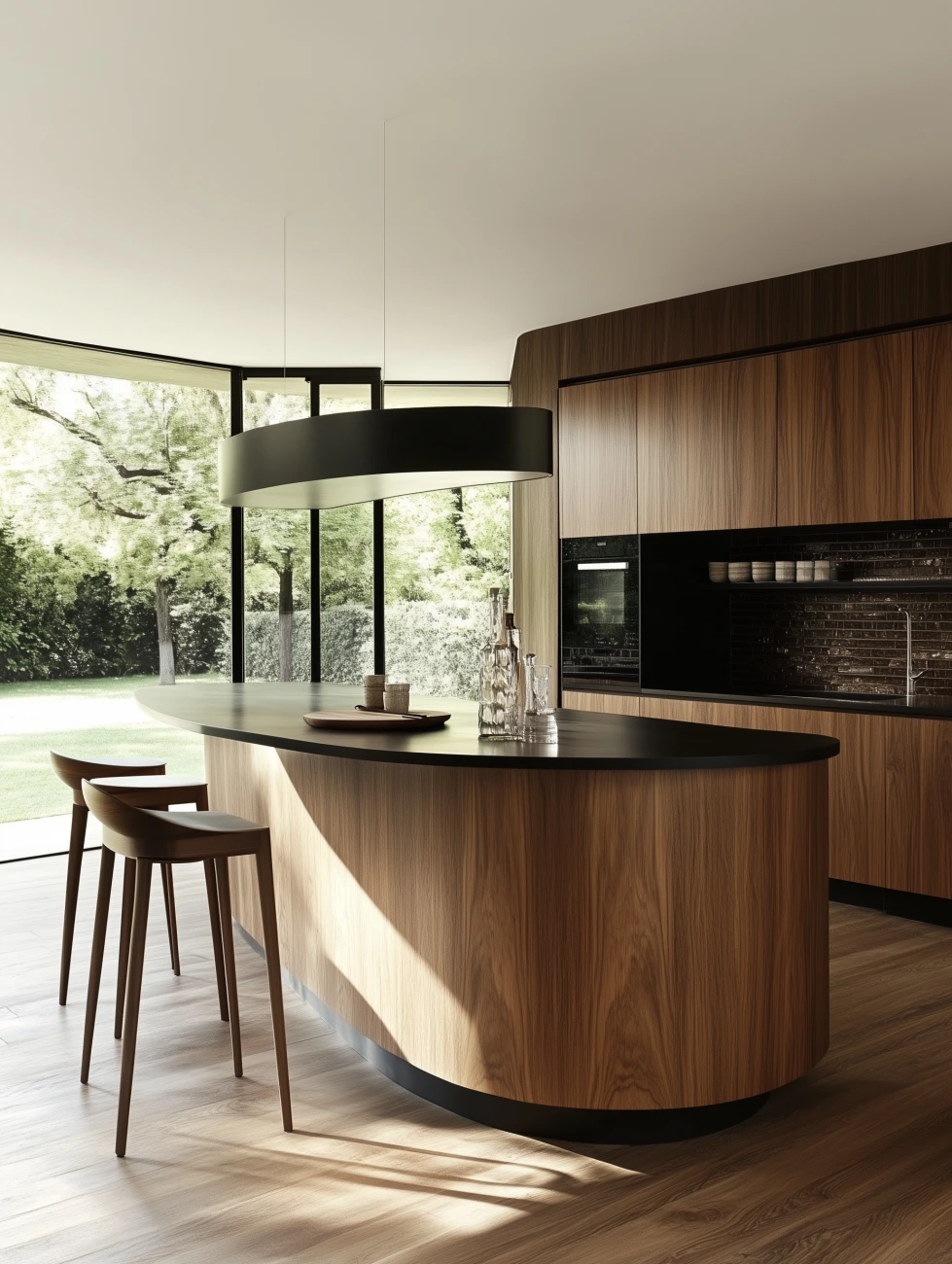
Future Trends in Curved Kitchen Design
Looking ahead, kitchen designs will mix smart tech with flowing shapes. Touch-screen panels and appliances will fit seamlessly into rounded cabinet fronts, while circular induction cooktops will sit flush with curved counters. Bendable materials like recycled composites will make rounded shapes more budget-friendly.
Personalised curves will match each family’s habits, with adjustable-height rounded counters and movable curved islands becoming common options. These flexible elements will let kitchens change shape as needs shift throughout the day.
Embracing the Future of Kitchen Design
The journey toward softer, more organic kitchen spaces reflects a broader shift in how we view our homes. Curved design elements aren’t just a passing trend – they represent a fundamental rethinking of how kitchens can better serve our needs for both functionality and emotional wellbeing.
As we look ahead, the integration of curved elements in kitchen design will continue to evolve, shaped by advances in materials, technology, and our understanding of space. Whether through subtle rounded corners or dramatic arched features, these flowing forms are creating kitchens that don’t just work better – they feel better too.

